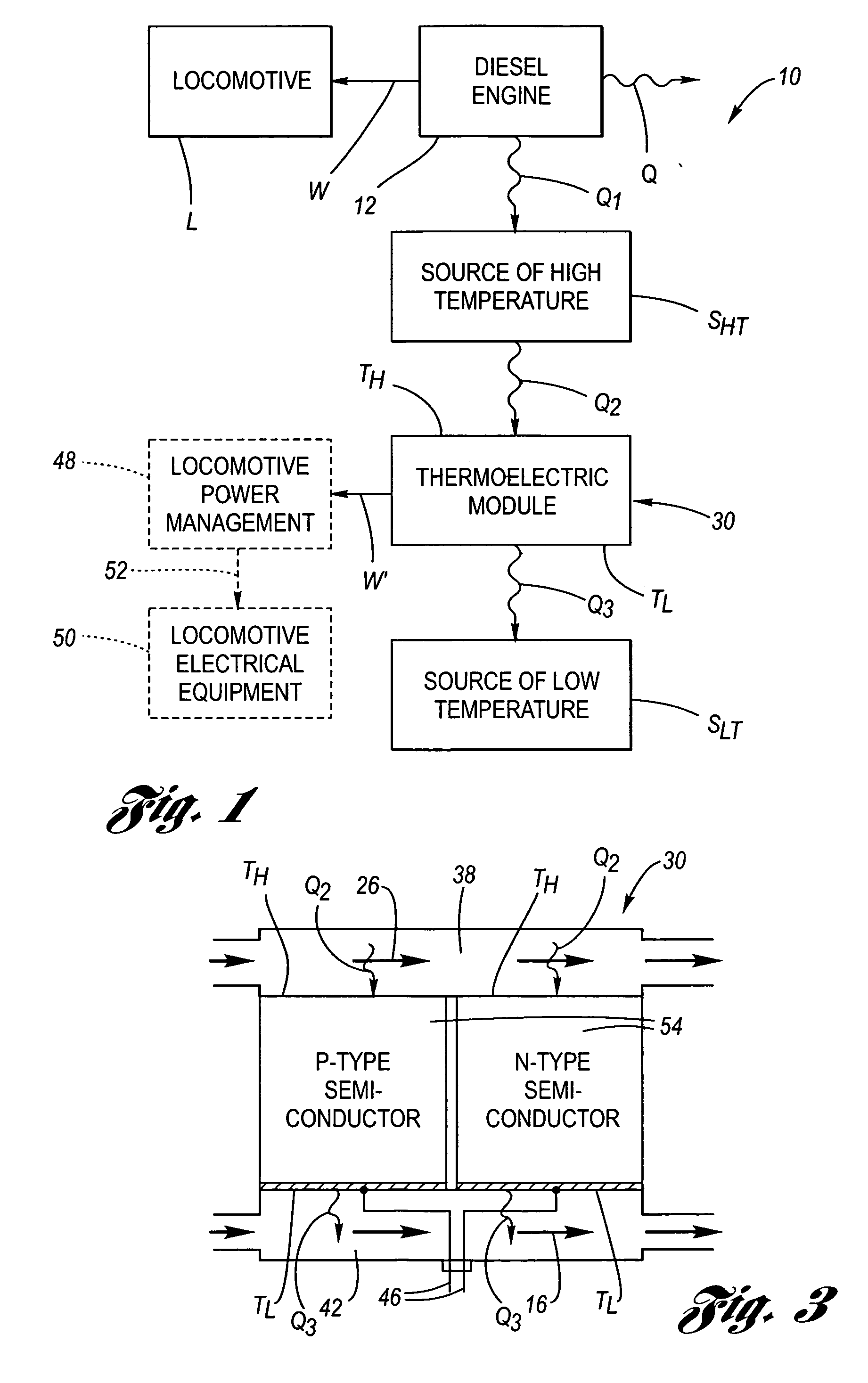Diesel-electric locomotive engine waste heat recovery system
a technology of waste heat recovery and diesel-electric locomotives, which is applied in the direction of locomotives, machines/engines, lighting and heating apparatus, etc., can solve the problems of limited use of thermoelectric technology, and achieve the effect of recovering waste hea
- Summary
- Abstract
- Description
- Claims
- Application Information
AI Technical Summary
Benefits of technology
Problems solved by technology
Method used
Image
Examples
Embodiment Construction
[0022] Referring now to the drawings, wherein in the various views like numbers refer to like functioning components, FIG. 1 depicts a flow chart schematic of a locomotive diesel engine waste heat recovery system 10. The diesel engine 12 combusts fuel and produces work W for powering the locomotive L and also produces waste heat. A portion of the waste heat Q is dumped to the atmosphere, and another portion of the waste heat Q1 provides a source of high temperature SHT. The heat from the source of high temperature SHT is exposed to one side of a thermoelectric module 30 and supplies heat Q2 thereto so as to provide a high temperature heat source TH thereat. A source of low temperature SLT, as for example engine coolant or the atmosphere itself, is in contact with an opposite side of the thermoelectric module and extracts heat Q3 so as to provide a low temperature heat source TL thereat. The high temperature heat source TH has a higher temperature than that of the low temperature hea...
PUM
 Login to View More
Login to View More Abstract
Description
Claims
Application Information
 Login to View More
Login to View More - R&D
- Intellectual Property
- Life Sciences
- Materials
- Tech Scout
- Unparalleled Data Quality
- Higher Quality Content
- 60% Fewer Hallucinations
Browse by: Latest US Patents, China's latest patents, Technical Efficacy Thesaurus, Application Domain, Technology Topic, Popular Technical Reports.
© 2025 PatSnap. All rights reserved.Legal|Privacy policy|Modern Slavery Act Transparency Statement|Sitemap|About US| Contact US: help@patsnap.com



